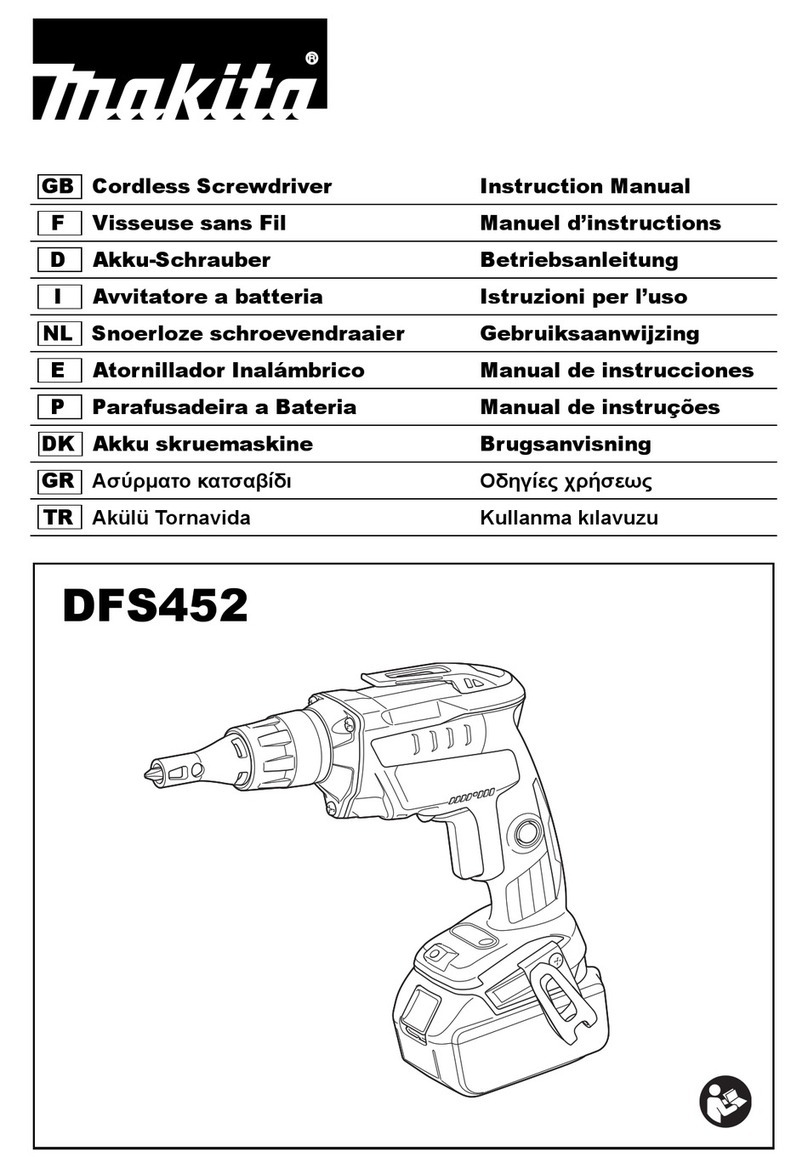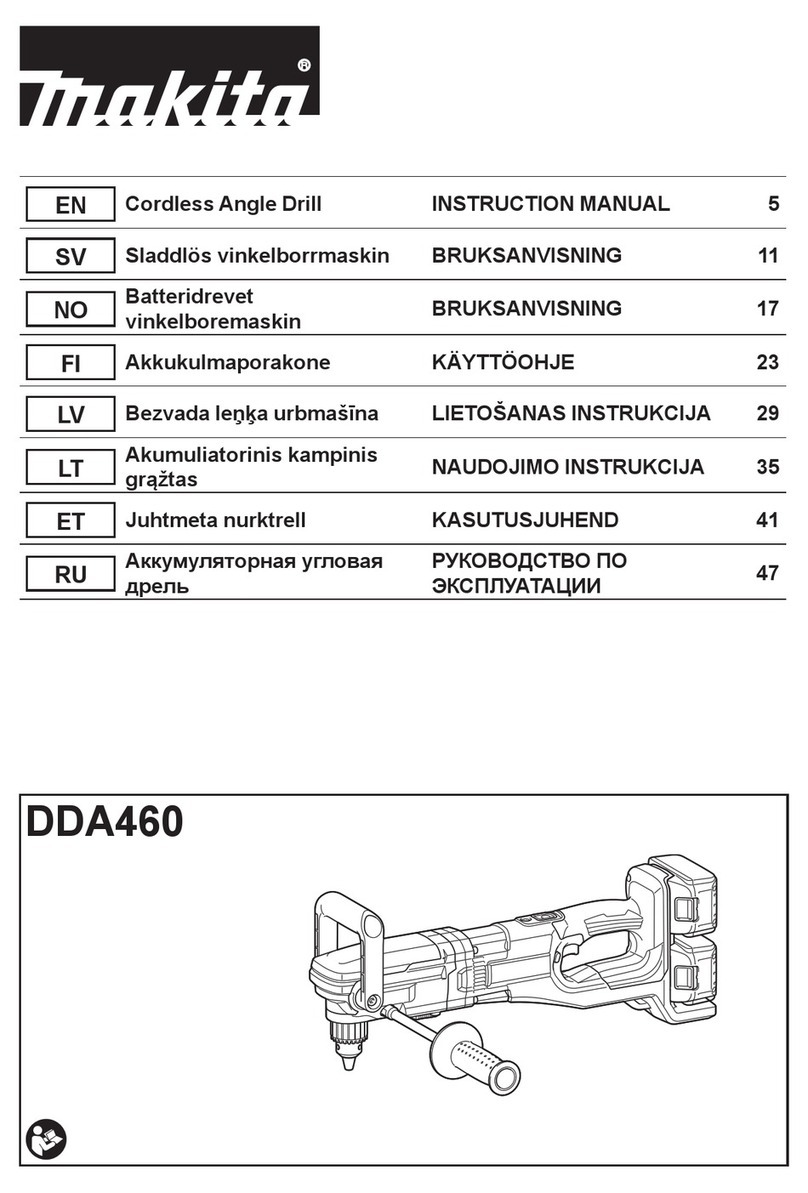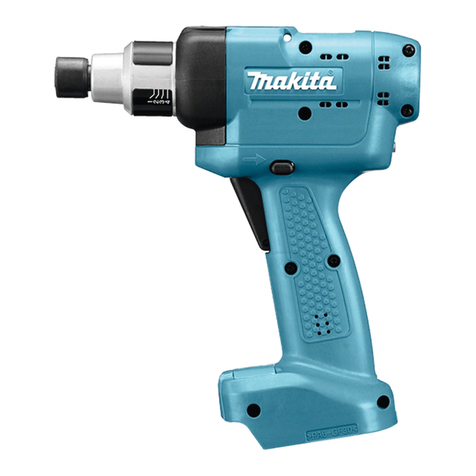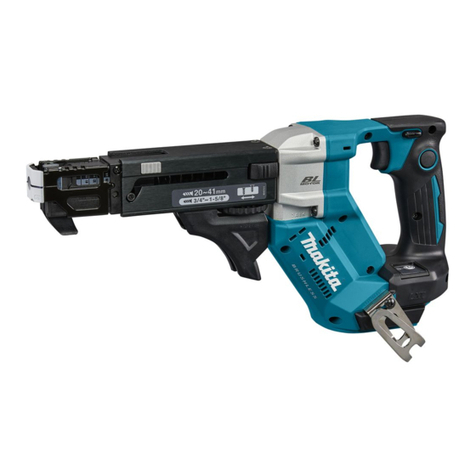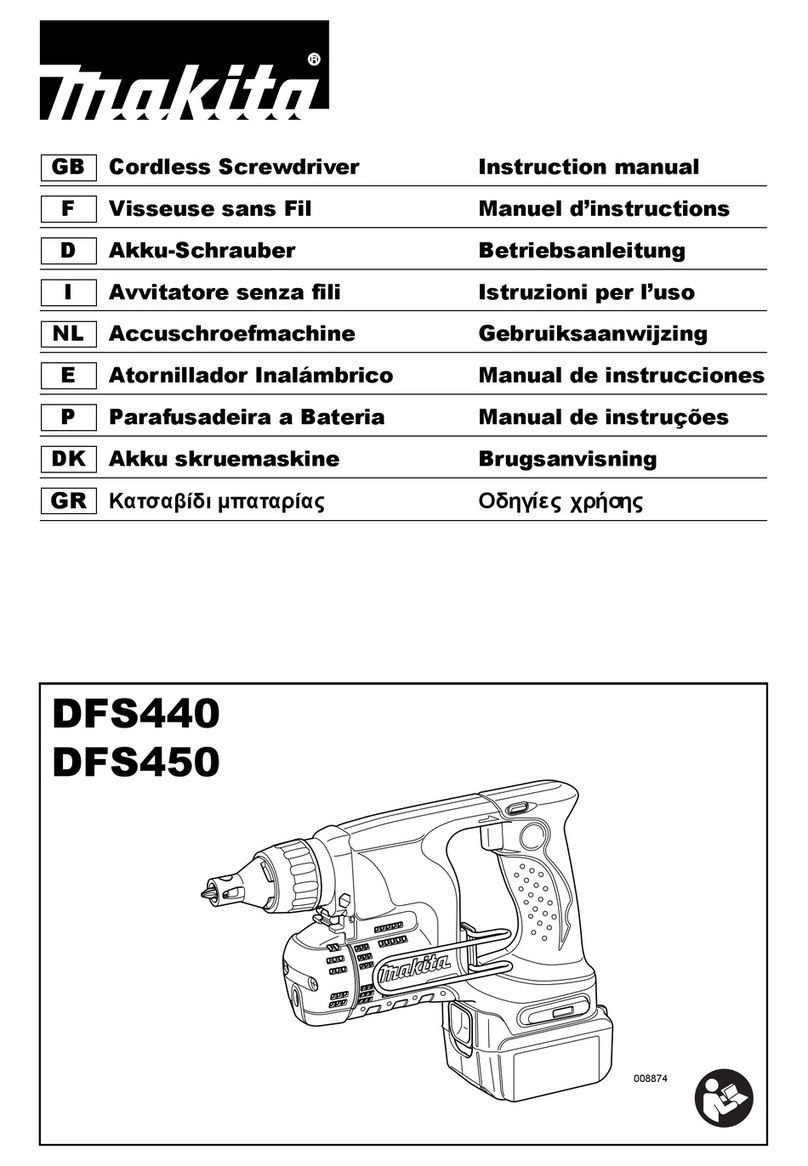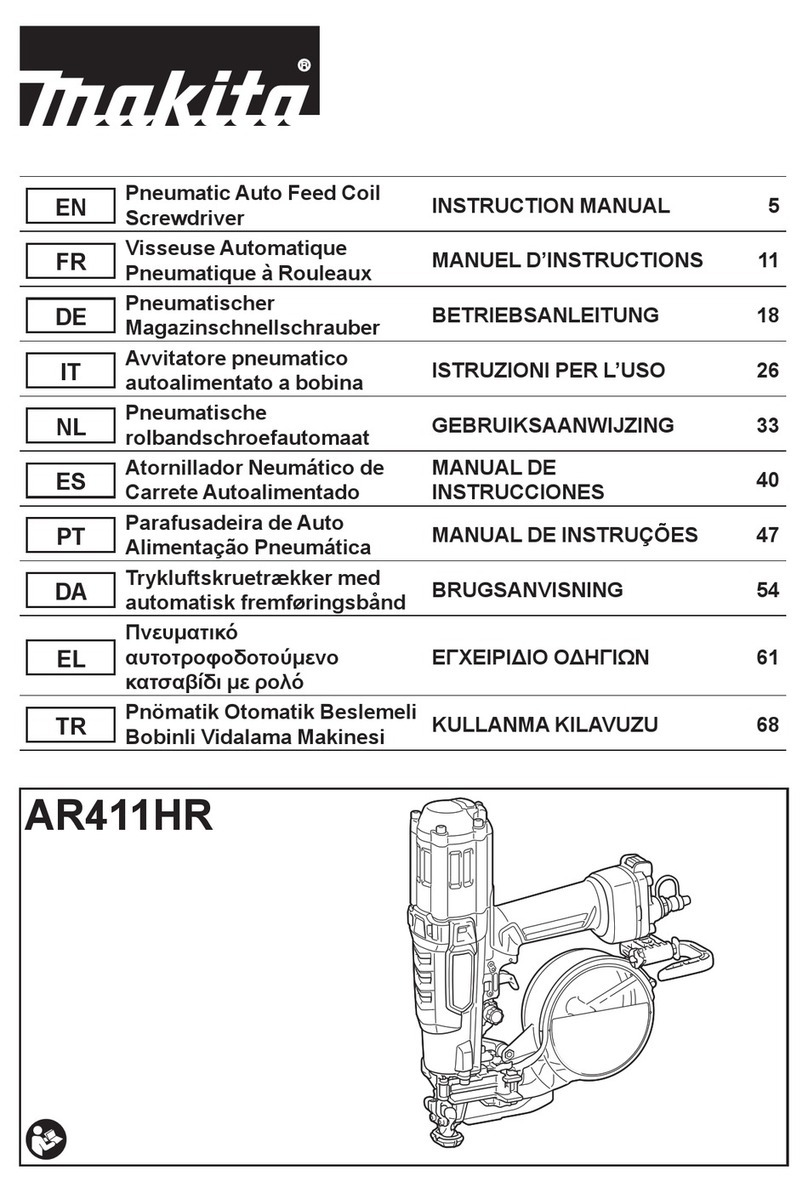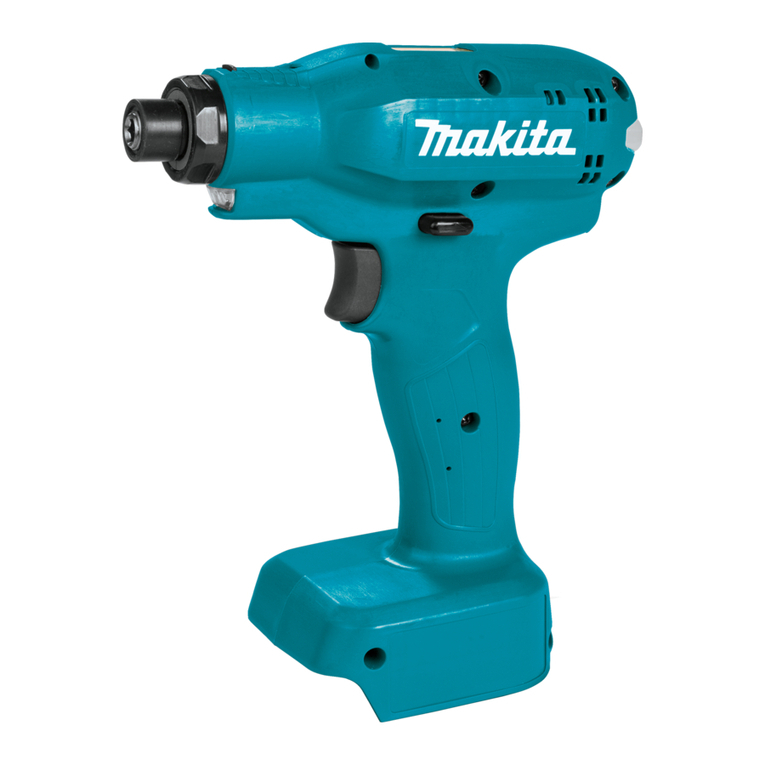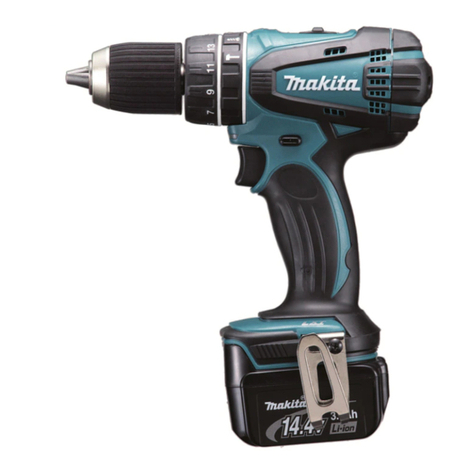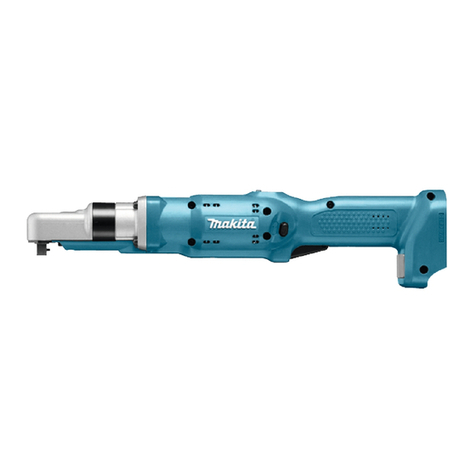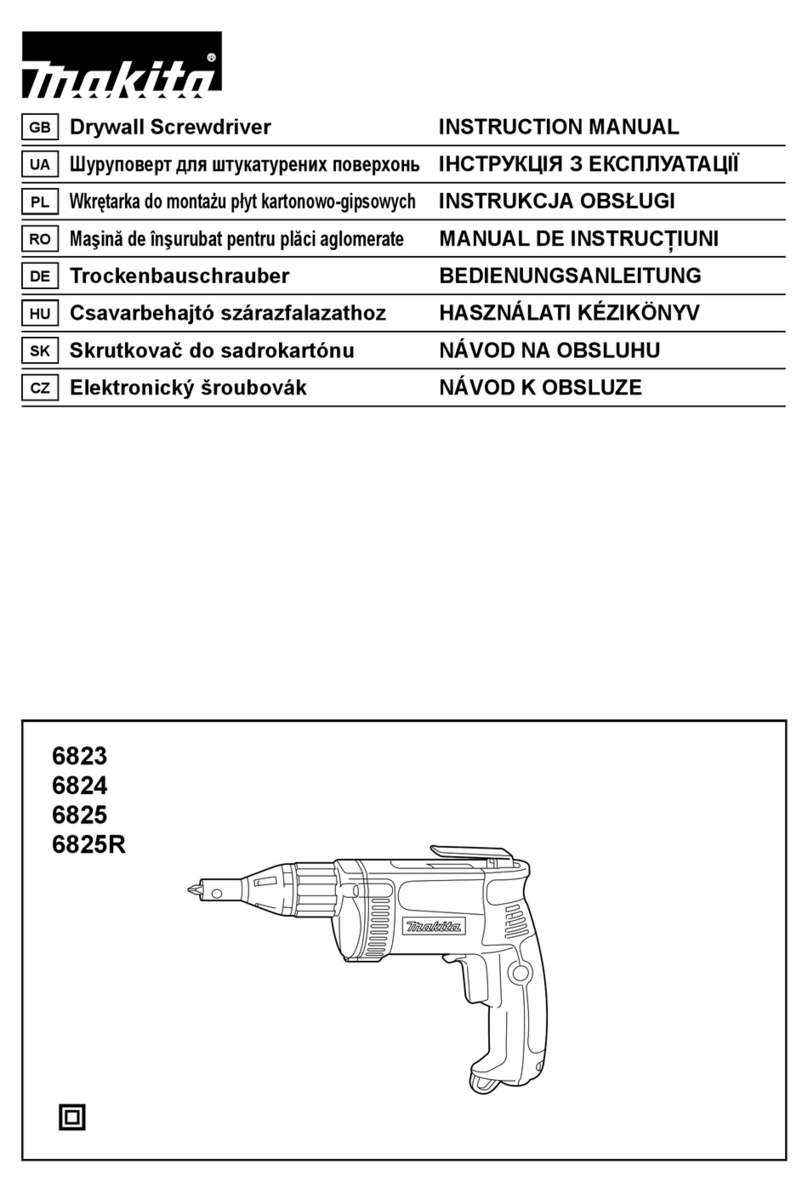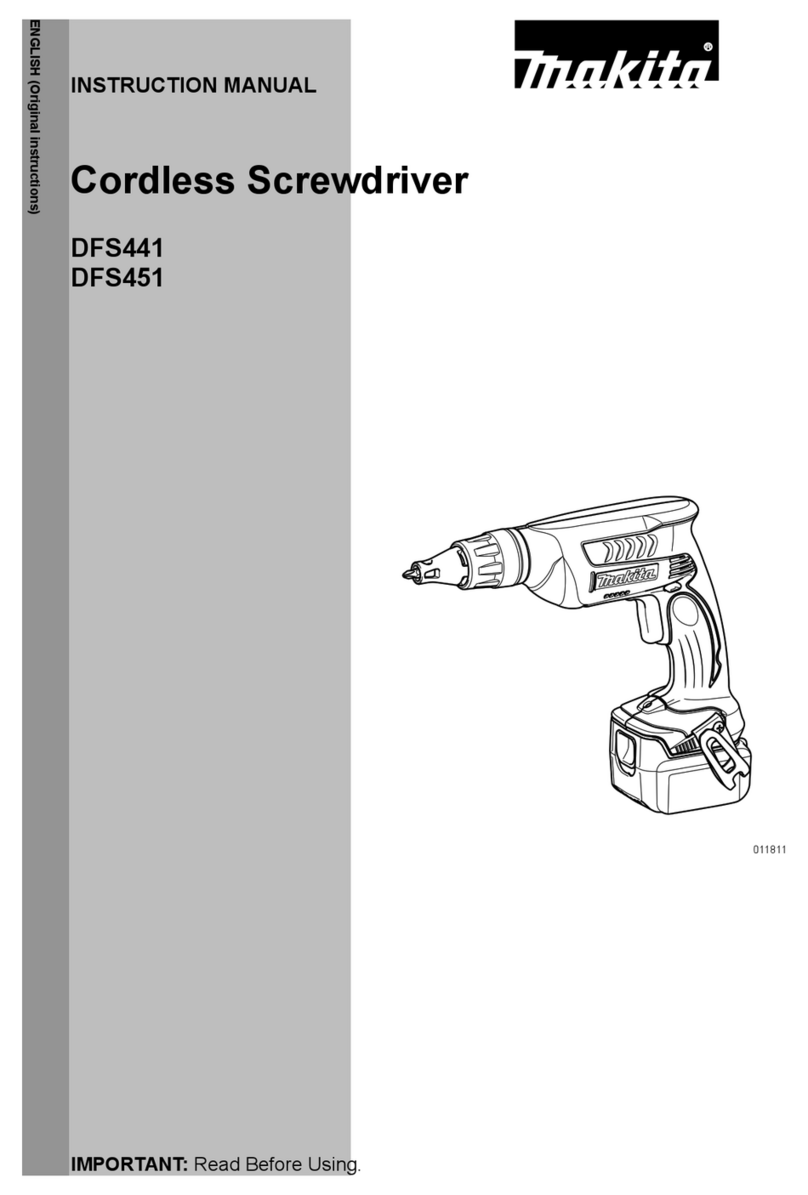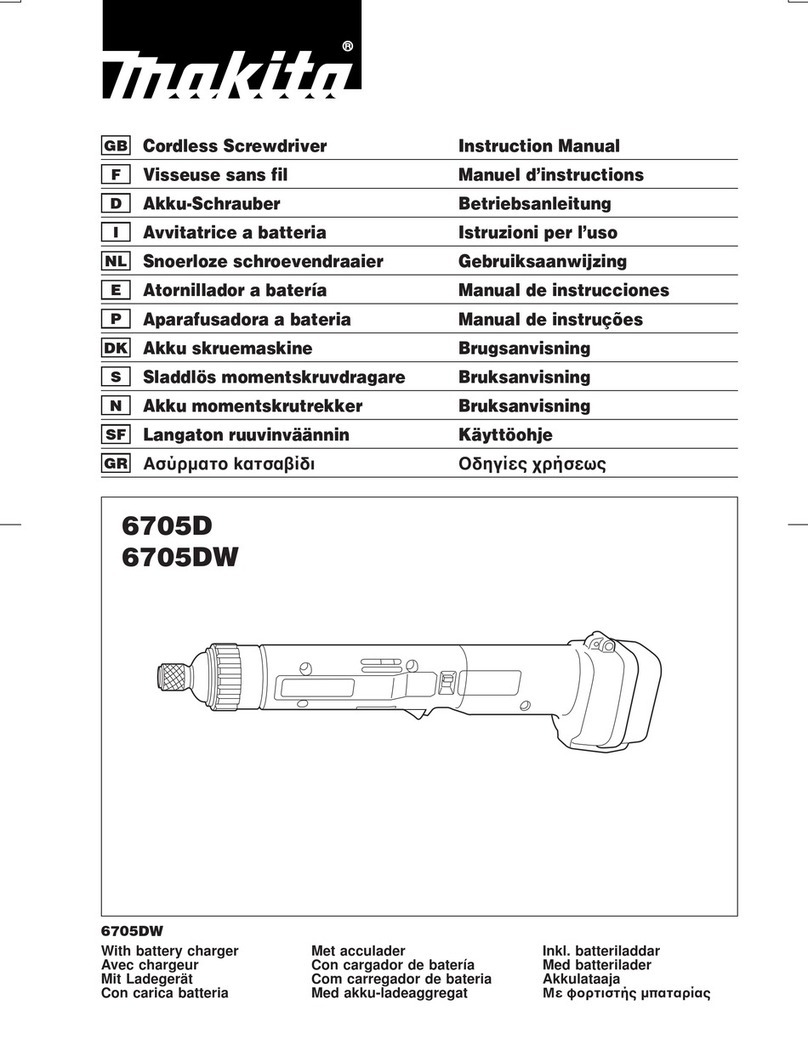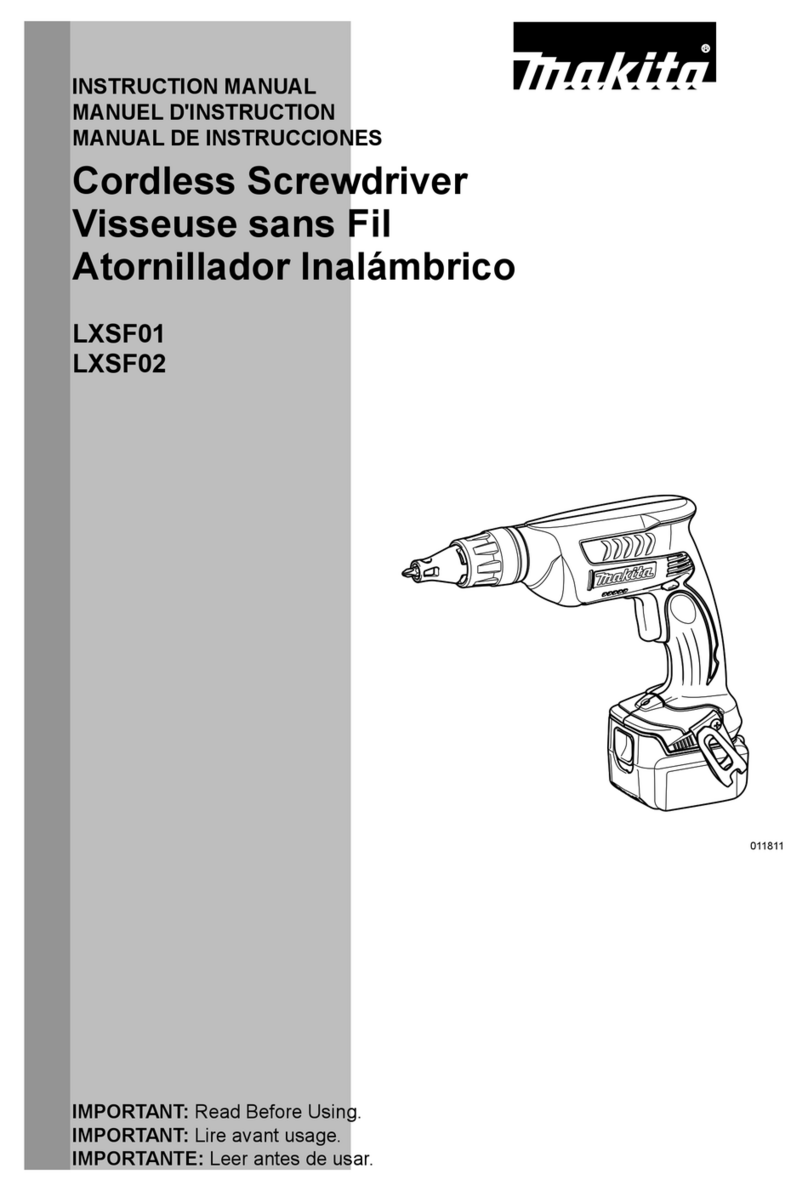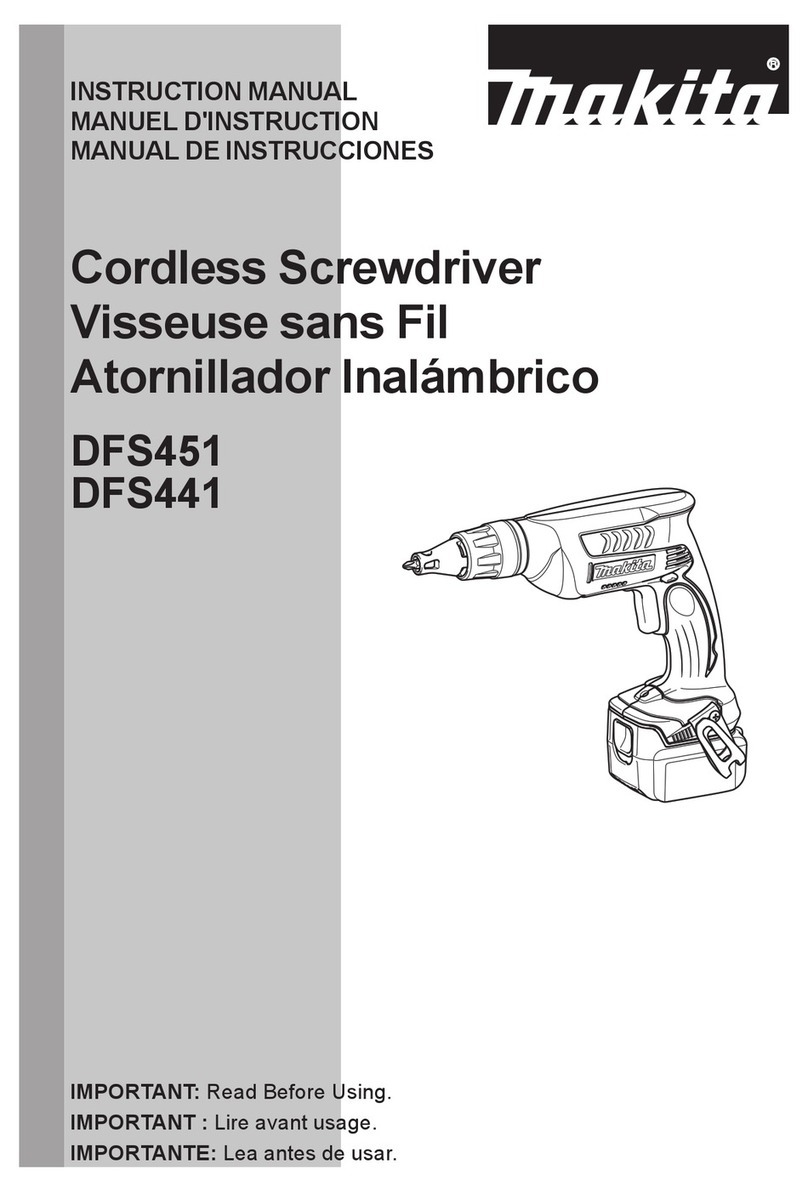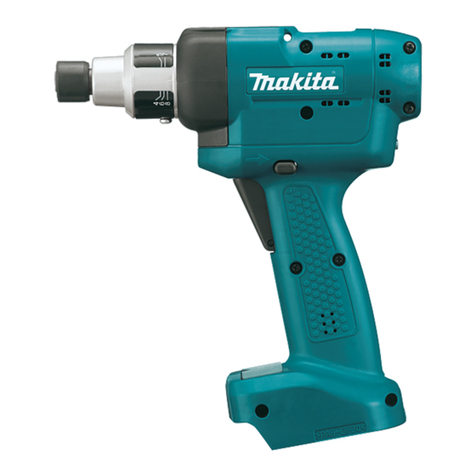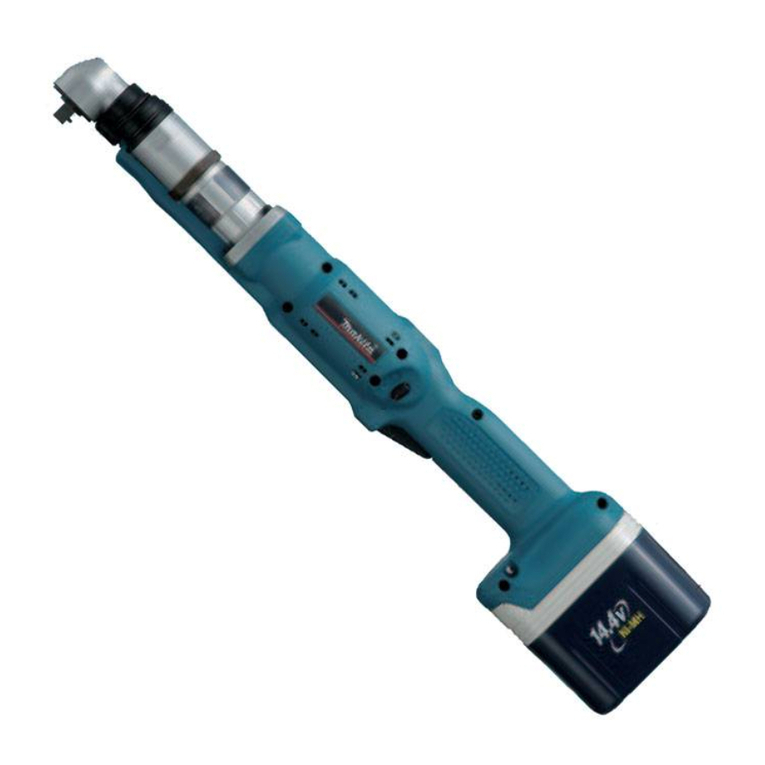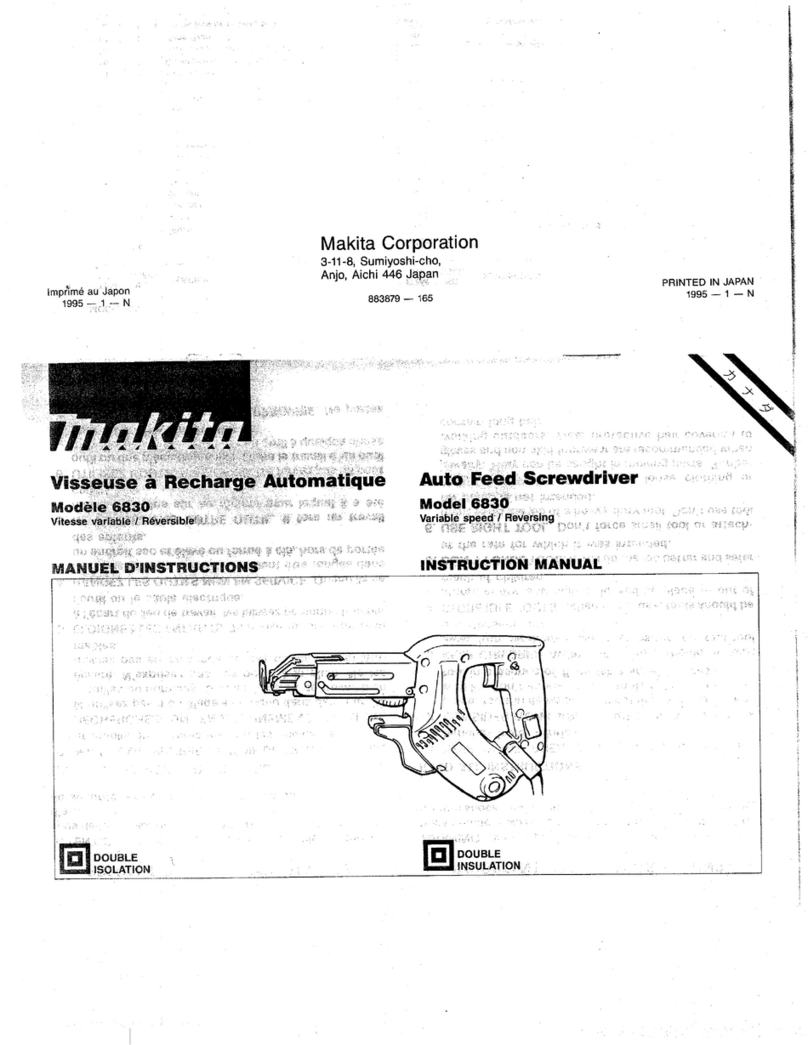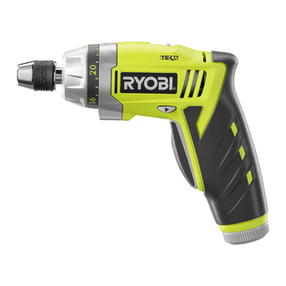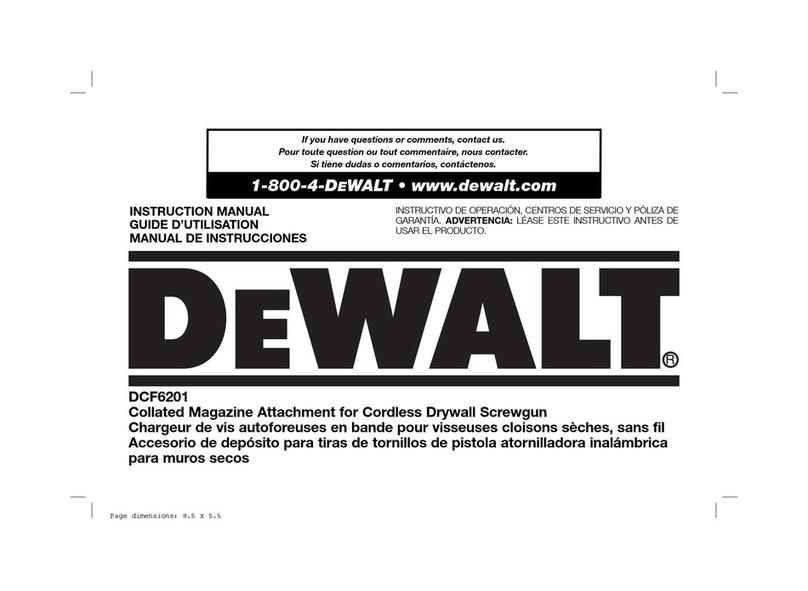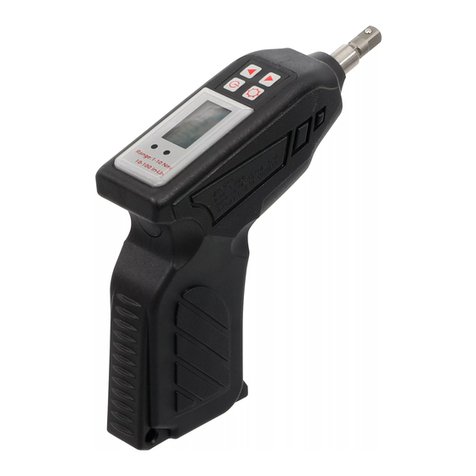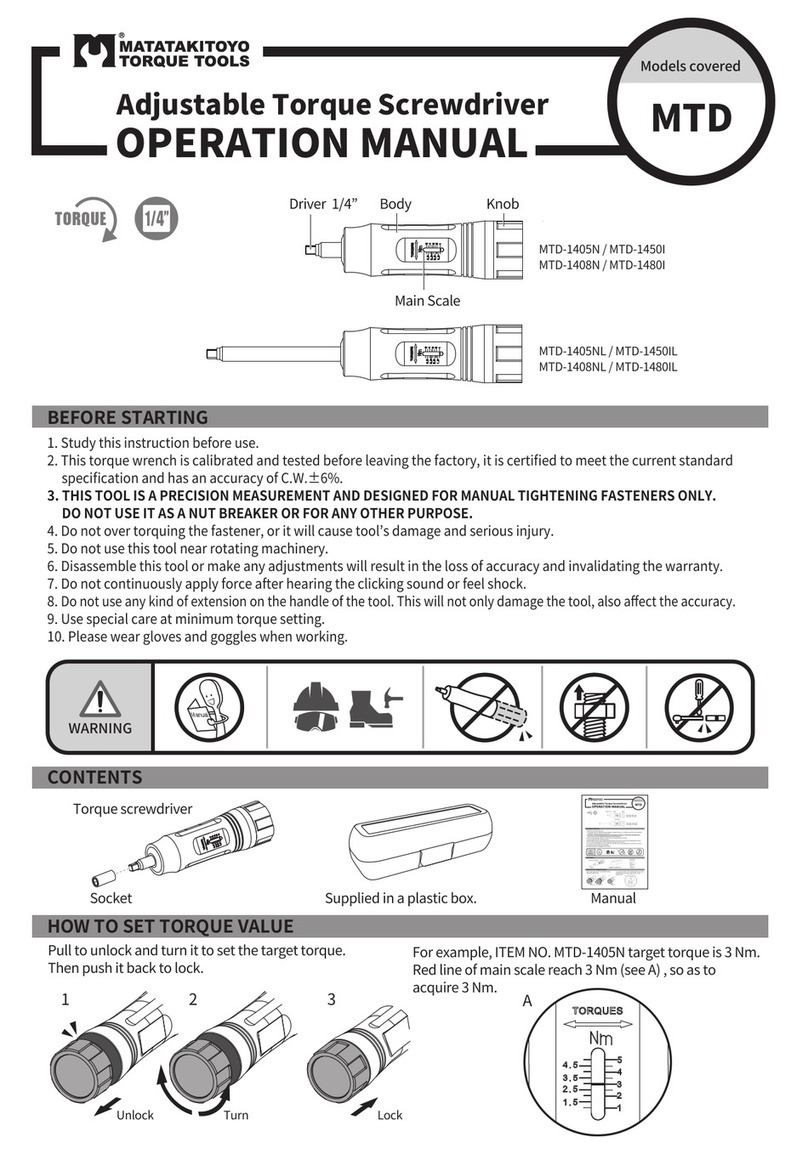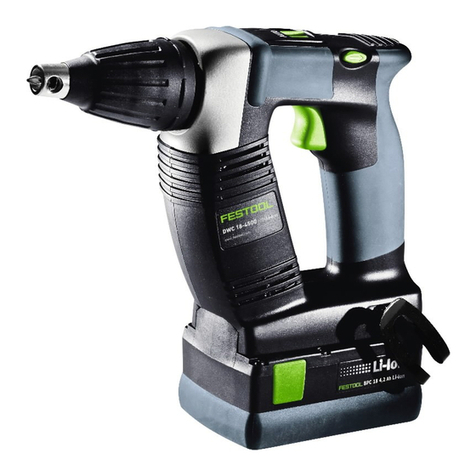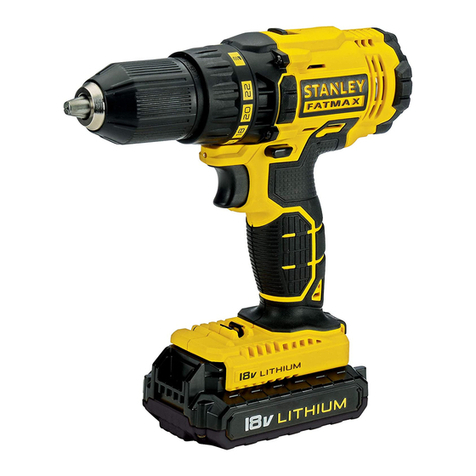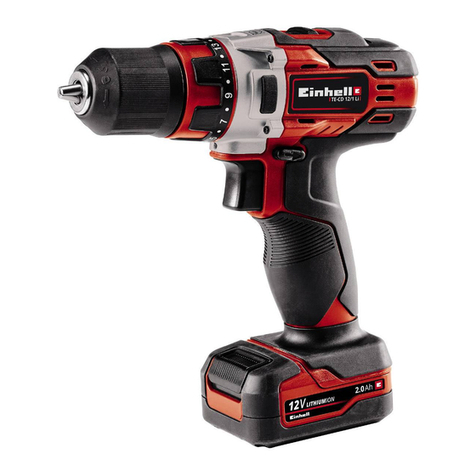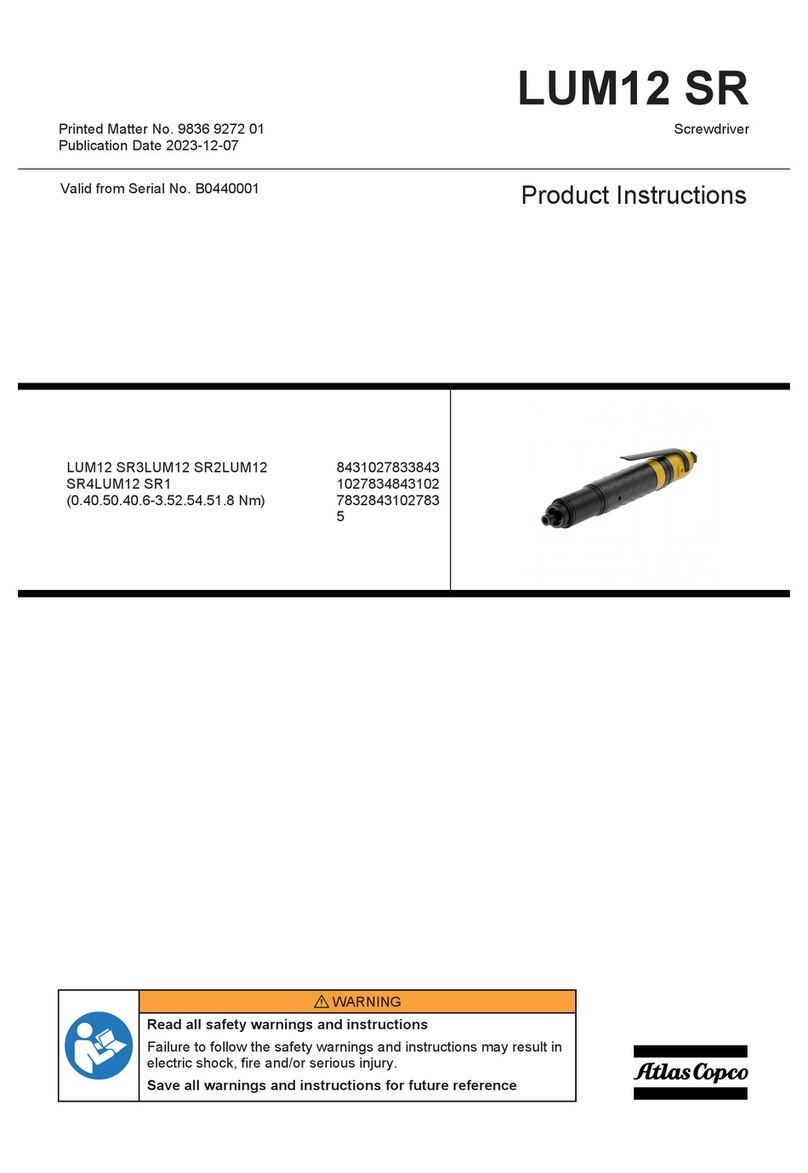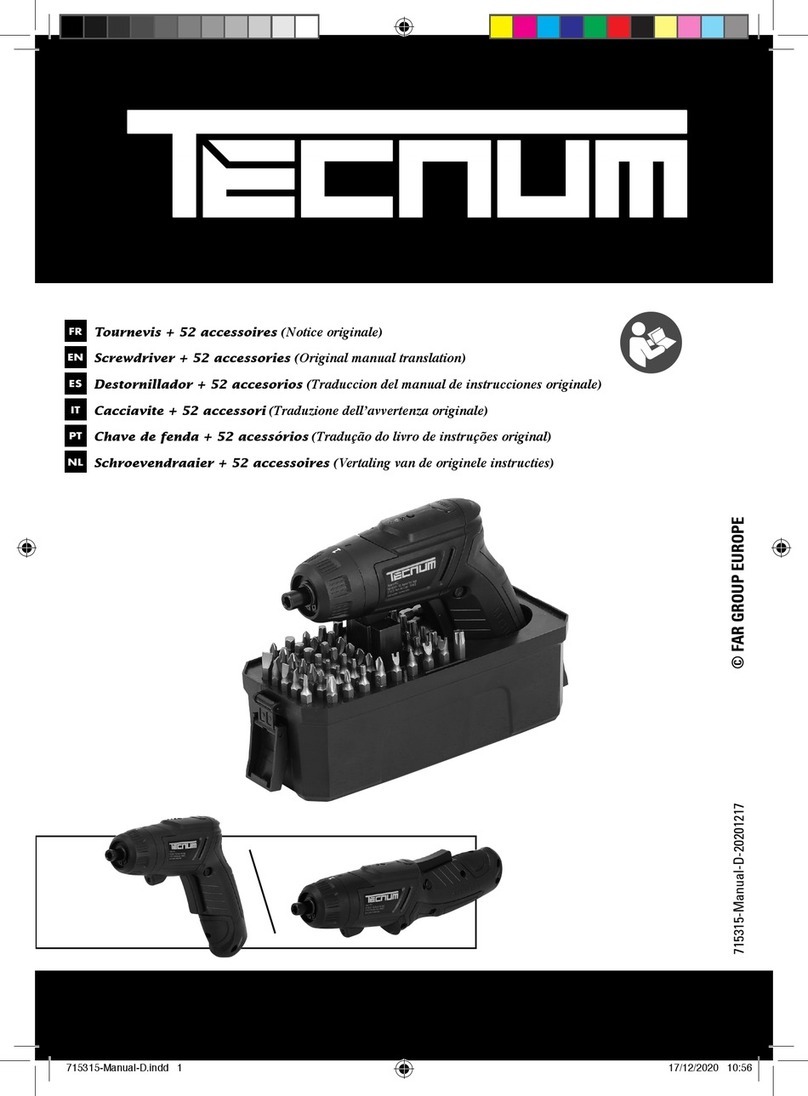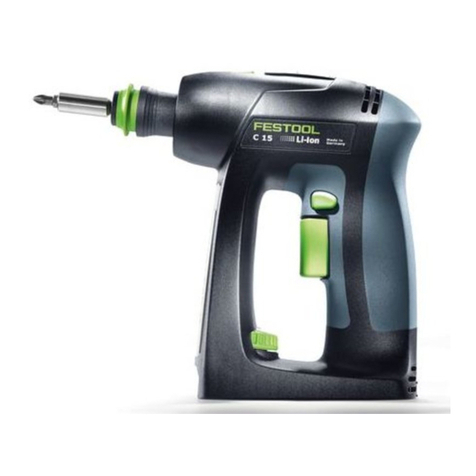GENERAL SAFETY RULES
(For
All
Battery Operated
Tools)
WARNING! Read and understand
all
instructions.
Failure
tofollow all instructions listed below, may result
in
electric
shock, fire and/or serious personal injury.
SAVE
THESE INSTRUCTIONS
Work
Area
Keepyour work area clean and well
lit.
Cluttered benches and dark areas invite
accidents.
Do notoperate power tools inexplosive atmospheres, suchas
in
the presence
of flammable liquids, gases, or dust. Power tools create sparks which may ignite
the dust or fumes.
Keep bystanders, children, and visitors away while operating a power tool.
Distractions can cause you to lose control.
Electrical Safety
A battery operatedtoolwithintegral batteriesor a separate batterypack must
be recharged only with the specified charger for the battery.
A
charger that
may be suitable for one type of battery may create
a
risk of fire when used with
another battery.
Use battery operated tool only
with
specifically designated battery pack. Use
of any other batteries may create a risk of fire.
Personal Safety
*Stay alert, watch what you are doing, and use commonsense when operating
a power tool. Donotuse tool while tired or under the influence of drugs, alcohol,
or medication.
A
moment of inattention while operating power tools may result
in serious personal injury.
Dress properly.
Do
not wear loose clothing or jewelry. Contain longhair. Keep
your hair, clothing, and gloves away from moving parts. Loose clothes, jewelry,
or long hair can be caught in moving parts.
Avoid accidental starting. Be sure switch isinthe lockedor off position before
insertingbattery pack. Carrying tools with your finger on the switch or inserting
the battery pack into a tool with the switch on invites accidents.
Remove adjusting keys or wrenches before turning the tool on. A wrench or
a
key that is left attached to
a
rotating part of the tool may result inpersonalinjury.
Do
not overreach. Keep proper footing and balance at all times. Proper footing
and balance enable better control of the tool in unexpected situations.
Use safety equipment. Always wear eye protection. Dust mask, non-skidsafety
shoes, hard hat, or hearing protection must be used for appropriate conditions.
2
